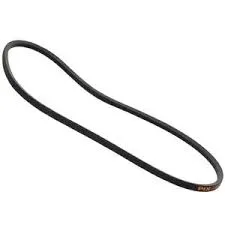- Arabic
- French
- Russian
- Spanish
- Portuguese
- Turkish
- Armenian
- English
- Albanian
- Amharic
- Azerbaijani
- Basque
- Belarusian
- Bengali
- Bosnian
- Bulgarian
- Catalan
- Cebuano
- Corsican
- Croatian
- Czech
- Danish
- Dutch
- Afrikaans
- Esperanto
- Estonian
- Finnish
- Frisian
- Galician
- Georgian
- German
- Greek
- Gujarati
- Haitian Creole
- hausa
- hawaiian
- Hebrew
- Hindi
- Miao
- Hungarian
- Icelandic
- igbo
- Indonesian
- irish
- Italian
- Japanese
- Javanese
- Kannada
- kazakh
- Khmer
- Rwandese
- Korean
- Kurdish
- Kyrgyz
- Lao
- Latin
- Latvian
- Lithuanian
- Luxembourgish
- Macedonian
- Malgashi
- Malay
- Malayalam
- Maltese
- Maori
- Marathi
- Mongolian
- Myanmar
- Nepali
- Norwegian
- Norwegian
- Occitan
- Pashto
- Persian
- Polish
- Punjabi
- Romanian
- Samoan
- Scottish Gaelic
- Serbian
- Sesotho
- Shona
- Sindhi
- Sinhala
- Slovak
- Slovenian
- Somali
- Sundanese
- Swahili
- Swedish
- Tagalog
- Tajik
- Tamil
- Tatar
- Telugu
- Thai
- Turkmen
- Ukrainian
- Urdu
- Uighur
- Uzbek
- Vietnamese
- Welsh
- Bantu
- Yiddish
- Yoruba
- Zulu
डिस . 28, 2024 10:11 Back to list
timing belt motor
Understanding Timing Belt Motors A Comprehensive Overview
Timing belt motors are essential components in many mechanical systems, particularly in automotive engines and various machinery where precise timing and synchronization are crucial. These motors leverage timing belts, which are flexible and robust loops designed to transfer motion between different mechanical parts efficiently. In this article, we will explore the fundamental aspects of timing belt motors, their applications, advantages, and maintenance considerations.
What is a Timing Belt?
A timing belt is a rubberized loop that features teeth on its inner side. These teeth grip the gears of the motor and the driven components, ensuring that they move in sync. The primary function of a timing belt is to maintain the timing of the engine or mechanical system, preventing slippage that could result in timing discrepancies and operational failures.
How Timing Belt Motors Work
Timing belt motors operate on a straightforward yet effective principle. The motor drives a pulley attached to the timing belt, which, in turn, drives another pulley connected to a different component, such as an alternator or camshaft. The teeth on the timing belt ensure that the motor's rotation is precisely matched with that of the driven component. This synchronization is critical, especially in internal combustion engines, where precise timing between the crankshaft and camshaft is necessary for efficient combustion and engine performance.
Applications of Timing Belt Motors
Timing belt motors are widely used across various industries. In the automotive sector, they play a critical role in engine design. Many modern vehicles rely on timing belts to manage the intricate timing of valves and pistons. In addition to automotive applications, timing belt motors are found in industrial machinery, robotics, and automation systems. They are employed in conveyor systems, CNC machines, and even 3D printers, where precise movement is paramount.
timing belt motor

In robotics, for example, timing belt motors allow for smooth and accurate positioning of parts, which is essential for robotic arms performing intricate tasks. Similarly, in automotive applications, a failure in the timing belt can lead to catastrophic engine damage, making its role critical in maintenance routines.
Advantages of Timing Belt Motors
One of the key advantages of timing belt motors is their ability to provide accurate and consistent motion. This precision reduces wear and tear on mechanical parts, increasing the longevity and reliability of the machinery in which they are used. Furthermore, timing belts are generally quieter and lighter than their alternatives, such as chain drives, making them suitable for applications where noise reduction is a priority.
Another significant benefit is their low maintenance requirement. Unlike chains that may need regular lubrication and adjustment, timing belts are relatively maintenance-free if installed correctly. However, periodic inspections are still recommended to ensure their integrity and function.
Maintenance Considerations
While timing belts are durable, they are not immune to wear. Typical signs of wear include cracking, fraying, or teeth degradation. It is essential to follow the manufacturer's recommendations regarding replacement intervals. Neglecting to replace a worn timing belt can lead to severe mechanical failures, often requiring costly repairs.
In conclusion, timing belt motors play an indispensable role in various mechanical systems, ensuring synchronized motion that enhances performance and efficiency. Their applications range from automobiles to industrial machinery, offering robust advantages such as precision, quiet operation, and minimal maintenance. By understanding the workings and benefits of timing belt motors, we can appreciate their importance in modern technology and engineering. As with all mechanical components, regular maintenance is key to ensuring their longevity and optimal performance.
-
Korean Auto Parts Timing Belt 24312-37500 For Hyundai/Kia
NewsMar.07,2025
-
7PK2300 90916-T2024 RIBBED BELT POLY V BELT PK BELT
NewsMar.07,2025
-
Chinese Auto Belt Factory 310-2M-22 For BMW/Mercedes-Benz
NewsMar.07,2025
-
Chinese Auto Belt Factory 310-2M-22 For BMW/Mercedes-Benz
NewsMar.07,2025
-
90916-02660 PK Belt 6PK1680 For Toyota
NewsMar.07,2025
-
drive belt serpentine belt
NewsMar.07,2025

